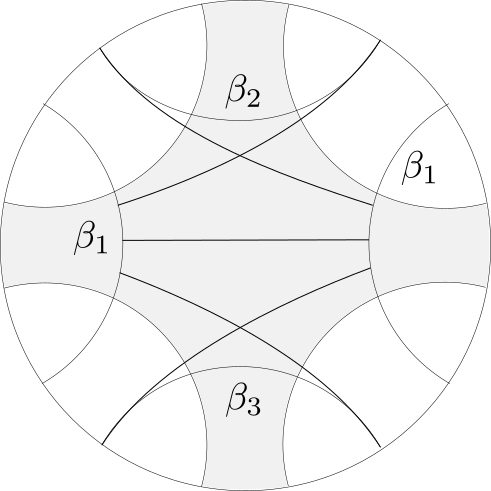I have asked this question on MSE. But I think Mo is a better place to ask my question. Here is the link to my question on MSE. I will rewrite it here:
I am trying to understand the article by Maryam Mirzakhani about Simple geodesics and Weil-Petersson volumes. In the third section of this article, the following proposition is stated. And I want to know why this proposition is correct. I mention the proposition:
Proposition: Let $P$ be a hyperbolic pair of pants with (non-empty)geodesic boundary components $\beta_1 , \beta_2, \beta_3$ of lenghts $x_1, x_2, x_3$ respectively. Then $P$ contains $5$ complete geodesics disjoint from $\beta_2 , \beta_3$ and orthogonal to $\beta_1$. More precisley, two of these geodesics meet $\beta_1$ respectively at $y_1,y_2$ and spiral to $\beta_3$, the other two meet $\beta_1$ respectively at $z_1,z_2$ and spiral to $\beta_2$. there is also a unique common geodesic perpendicular from $\beta_1$ to itself meeting $\beta_1$ perpendicularly at two points $w_1, w_2$.


